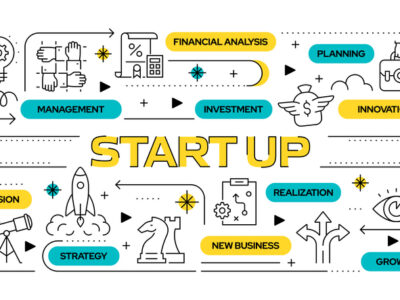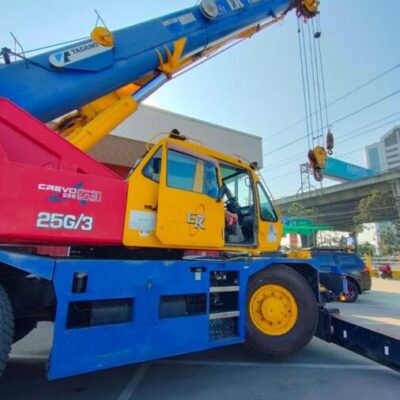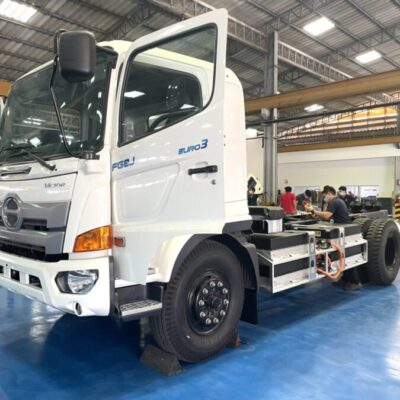Two critical components in an industrial manufacturing facility is attaining optimum productivity and having the lowest Life Cycle Cost. Production machinery is a key variable that directly affects production efficiency. It is therefore essential to maintain the machine in a ready-to-use condition. But since each machine is used in a different context having varying Failure Modes, how will a facility owner know that a machine is in need of maintenance to prevent further damage?
Reliability Centered Maintenance (RCM) or reliability based maintenance is a process that many companies in advanced industrial countries use to manage risk, and to design maintenance tasks that are suitable for their equipment with varying damage complexity, and offering the lowest total Life Cycle Cost, which is like changing from Cost center to Profit center.
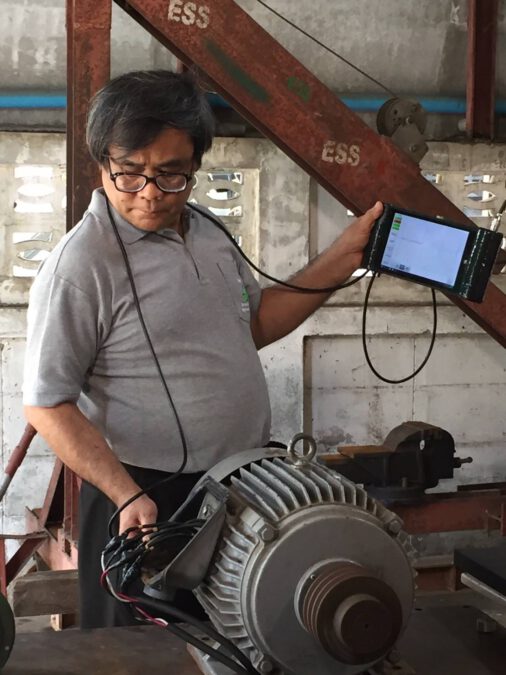
Mr. Manorom Chiewpanich, from Equity Services and Solutions Co., head of the research project “Software development RCMate4.0 for planning preventive equipment maintenance based on RCM principle and combining the analysis and interpretation of ultrasonic and vibration signals by using artificial intelligence technology to increase productivity in the automotive industry”, which received research funding from Program Management Unit for Competitiveness (PMUC), the Science, Research and Innovation Promotion Fund, stated that “Maintenance is the main cost and RCM is a process that helps to reduce this burden. But Thailand still does not like to use RCM because we lack both a database and a facilitator, and RCM requires collection of data from machines and equipment used in production thoroughly and systematically, and it requires personnel with expert-level analysis skills. Consequently, the research team wanted to develop an easy-to-use RCM program, minimizing reliance on information from experts as much as possible.”
The RCMate4.0 software, which is being developed, uses the Reliability Block Diagram technique to help in the analysis and maintenance planning for the particular equipment before damage happens in order for the machines to perform at their best with the highest profitability and lowest cost under the Monte Carlo Simulation, which is a virtual decision-making simulation program, making the program smarter. In addition, the ICM Safe plan program is implemented as a rule based program and artificial intelligence (AI) is embedded to help in the processing and analysis of databases as well as processing signals.
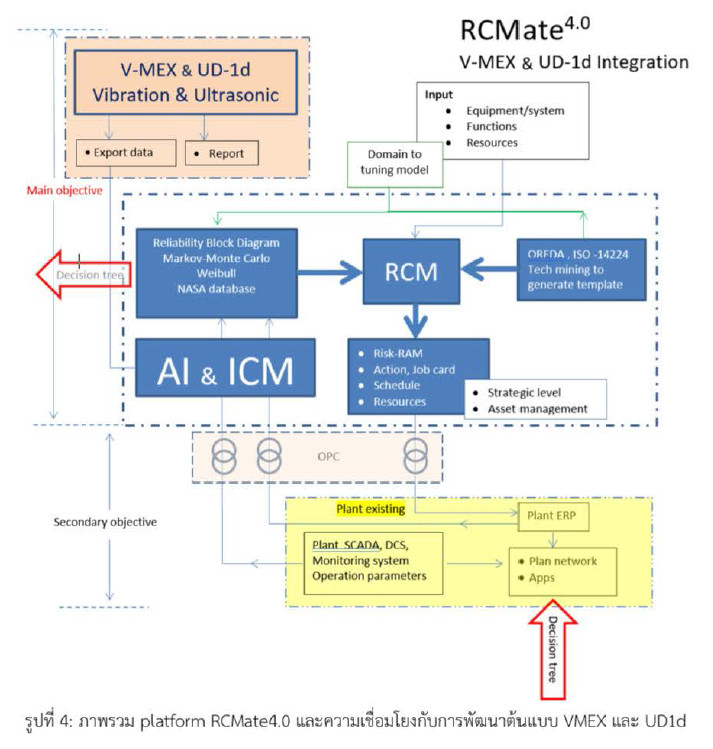
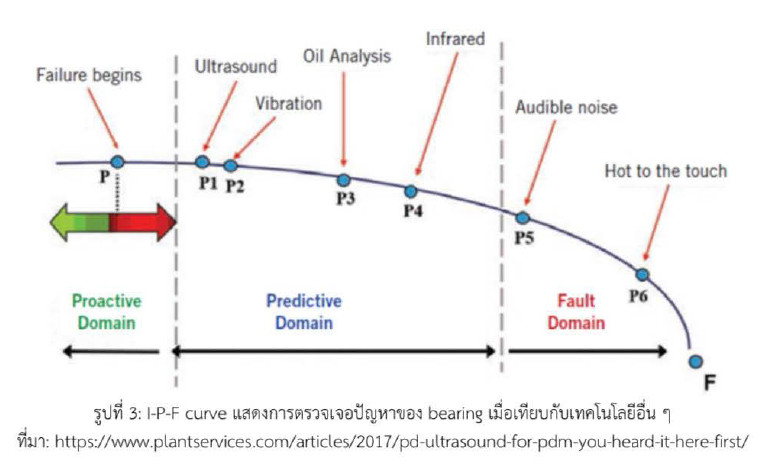
This Thai-national RCM software, currently under development, is more specialized than the current RCM system in that it uses text mining to create a “virtual facilitator” and adds functionality along with the use of advanced P-F Curve forecasting technique to produce results as close as possible to reality, which allows the critical analysis of equipment to be used in effective maintenance planning before the machines suffer any damage. This is done by using two types of instruments, “V-MEX” that uses vibration detection techniques, and the “UD-1d” that uses ultrasonic signal detection techniques. These two instruments are the results of innovative expansion on the company’s preexisting knowledge base.
The RCMate4.0, when it is completed, will be of great benefit to Thai entrepreneurs, especially SMEs who do not have access to available capital, which is one of the research team’s primary intentions: to allow businesses or SMEs to be able to choose whether to buy the entire technology package, or selectively buy only individual modules, or even buy service-based packages. What is important is that Thailand will not have to rely on technology imports in the future.
In closing, Mr. Manorom concluded interestingly that, “We have to admit that Thailand currently lacks capability to build capital equipment, or even with the necessary capability, it cannot compete with foreign countries in terms of economies of scale. Therefore we can only import machines to use in production. So we have to make the most of it. Use it to maximum efficiency. This is how the RCMate4.0 came to be. The next task for the research team is to educate the market, to push RCMate4.0 into commercial use. But it’s important that the government supports it, and agencies must help to promote it, before innovations, which are still a new concept in Thailand, can be truly and fully utilized and leveraged.”




